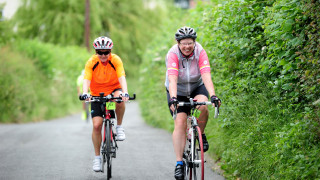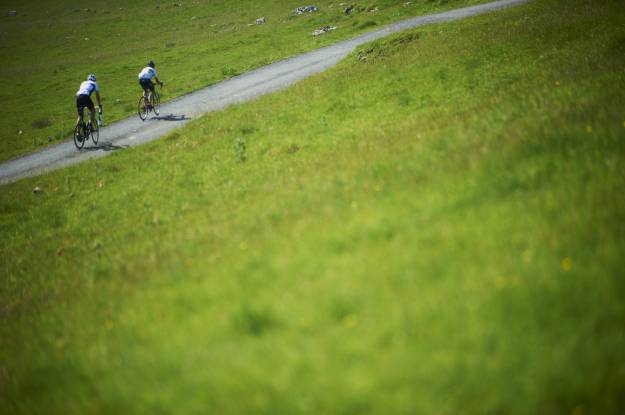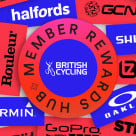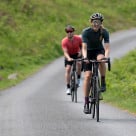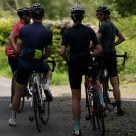Knowledge Level: Beginner
Our 8-week sofa to 50 km training plan is ideal for the complete cycling novice who is currently sedentary and is looking to start cycling for health, fitness, recreation, commuting or to tackle a challenge or charity ride.
Here is the overview of the 8-week training plan.
Download the 8-week training plan here.
Who is it suitable for?
With a progressive approach, our 8-week sofa to 50 km training plan is suitable for anyone wanting to get fit and start cycling, even if you are currently sedentary. We do however recommend that you consult with your doctor before beginning a structured training plan.
What is involved?
The time commitment ranges from a minimum of 1 hour 30 minutes to a maximum of 6 hours 30 minutes.
Each week, you will typically complete three rides.
We have given you time guidelines to work from as, if for example you live in a very hilly area, you will cover less distance in the same time than someone living somewhere flatter.
From Week 3, the rides are split into two 60 minute midweek rides and then a longer weekend ride which progressively builds in duration towards your goal.
You can substitute one of the midweek rides for a Spinning Class. It is important though that at least two rides a week are out on the roads to allow you to develop your bike handling skills and confidence as well as your fitness.
As the weekend rides get longer, don’t feel you have to complete them in one go, a café stop is definitely acceptable and a nice social side to cycling.
How do I know if I’m riding hard enough?
Pacing and an awareness of the effort you are putting in are essential for successful cycling. In the Sofa to 50 km plan, effort guidelines are made based on a simple Rate of Perceived Exertion Scale (RPE).
|
Score |
Description/Feeling |
|
1 |
Sitting on a sofa doing nothing. |
|
2 |
Getting up to make a cup of tea. |
|
3 |
Easy paced recreational riding, slight feeling of exertion. |
|
4 |
All-day paced riding, not easy but definitely sustainable. Able to maintain a full uninterrupted conversation. |
|
5 |
Riding consciously quicker but still able to talk easily. |
|
6 |
Upping the effort, only able to talk in short sentences. |
|
7 |
Building on Level 6, you could probably just about respond “I’m fine!” if someone asked you how you felt. |
|
8 |
Riding hard, you can only sustain this for a couple of minutes and only communicate with single word answers. |
|
9 |
Almost as hard as you can possibly push your pedals |
|
10 |
100% sprint for the line. |
It is also important to be aware of cadence, this is the rate your legs spin the pedals and is referred to in terms of revolutions per minute (rpm). Many novice riders make the mistake of not using their gears correctly and riding with too low a cadence. The simplest way to monitor cadence is to purchase and fit a cheap speed/cadence monitor to your bike. This will also let you know how far you manage to ride. Alternatively, every now and then, simply count the number of pedal rotations one foot makes in 15 seconds and then multiply by four to get your minute rate. You should be aiming to keep your cadence above 80 rpm.
Is it all cycling?
No, some cross training workouts, although optional, should be part of your training. Don’t worry if you can’t manage dedicated sessions, even doing regular mobility work at home will benefit your riding. Cross training helps to prevent boredom, provides options if you are unable to ride and builds all-round injury preventing robustness.
What equipment do I need?
Most importantly, you will need a reliable and roadworthy bike. If it is a mountain bike or hybrid, you should consider fitting slick tyres to make riding on the road more efficient. If you are looking to buy a new bike, follow the link get some pointers. Don’t forget to include in your budget, accessories such as a helmet and the essential spares and tools you should carry when riding. If you have already got a bike but it has been sat unloved in the shed for a while, book it into your local bike shop for a check over and service. You might also want to consider some cycling specific clothing. A quality waterproof jacket is a must have for riding in the UK and padded shorts are essential for keeping your backside comfortable.

